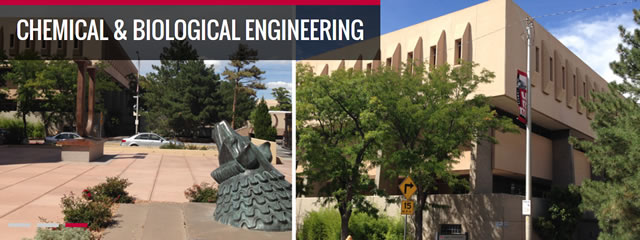
Chemical and Biological Engineering ETDs
Publication Date
3-21-1966
Abstract
Heisenberg (53) and Hund (57) postulated the existence of two modifications of hydrogen. This occurred as a result of Heisenberg's previous explanation of the existence for orthohelium and parahelium using quantum theory. From analogous considerations, he and Hund asserted that hydrogen was a mixture of two gases. Dennison (28) applied their theories to explain the falling off of the rotational specific heat of hydrogen. This had been observed by Eucken (34) in 1912. In 1928, Giaque and Johnston (45) held gaseous hydrogen at 85°K for six months. On liquefaction they found a detectable difference in vapor pressure. They stated that this did not conclusively prove that the two forms existed but it did not disprove it either. Experimental confirmation of the theories was eventually made by McLennan and McLeod (62) and Bonhoeffer and Harteck (11). Bonhoeffer and Harteck succeeded in isolating one of the hydrogen modifications and describing many of its properties. The two forms of hydrogen are called orthohydrogen and parahydrogen. This is not to be confused with orthohelium and parahelium. The helium modifications are based on the orientation of the electron spins while the hydrogen modifications are based on the orientation of the nuclear spins. In orthohydrogen, the nuclear spins are oriented in the same direction (parallel). In parahydrogen, the spins are oriented in the opposite direction (anti-parallel). As a result of the different spins there is a difference in the magnetic, optical, and thermal properties of the two gases. The existence of the total rotational energy in certain energy levels is affected by the spins. These energy levels are designated by rotational quantum numbers, J, which can be 0, 1, 2, 3, 4,.... The even rotational numbers refer to energy levels occupied only by para molecules whereas the odd rotational numbers refer to energy levels occupied only by ortho molecules. As temperature is lowered, the tendency is for all molecules to pass into the lowest energy state. This state has a quantum number of zero and is a para level. At absolute zero temperature the molecules would be 100 per cent para. As the temperature approaches infinity he equilibrium content is twenty-five per cent parahydrogen. Figure 1 is a plot of equilibrium parahydrogen percentage versus temperature. It was discovered that when normal hydrogen was liquefied, most of the liquid boiled away in a short period of time. This was due to a conversion of the orthohydrogen into parahydrogen. As the temperature decrease the heat of conversion increases at a rapid rate as shown in Figure 2. The answer to the boiloff problem was heterogeneous catalysis. The normal hydrogen was liquefied over a catalyst. Heat was removed from the catalyst thus preventing the boiling of the liquid. This left a liquid with a high parahydrogen content which was stable at the low temperature of the liquid. Weitzel et al. (94, 95, 97) have demonstrated the feasibility of producing large amounts of liquid parahydrogen continously.
Document Type
Thesis
Language
English
Degree Name
Chemical Engineering
Level of Degree
Masters
Department Name
Chemical and Biological Engineering
First Committee Member (Chair)
Thomas T. Castonguay
Second Committee Member
Arthur Alexander Armstrong, Jr.
Third Committee Member
Kenneth Edward Cox
Fourth Committee Member
Douglas Duane Phillips
Fifth Committee Member
Richard K. Traeger
Recommended Citation
Winkler, George A.. "Conversion of Parahydrogen to Orthohydrogen." (1966). https://digitalrepository.unm.edu/cbe_etds/111
